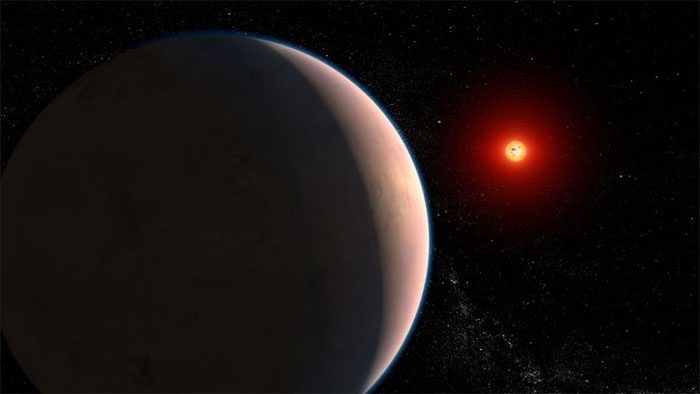The James Webb Space Telescope has detected water vapor surrounding a rocky exoplanet located outside our Solar System, orbiting a star that is 26 light-years away from Earth.
Astronomers have observed a rocky exoplanet named GJ 486 b through the James Webb Telescope. This planet is about 30% larger than Earth and has a surface gravity that is significantly stronger than ours, CNN reported on May 2.

Simulation of the planet GJ 486 b orbiting a red dwarf star outside the Solar System. (Image: NASA/ESA/CSA/Joseph Olmsted).
GJ 486 b orbits its star and completes one orbital cycle every 1.5 Earth days. Its proximity to the host star results in a surface temperature of 800 degrees Fahrenheit (430 degrees Celsius).
Astronomers believe that this planet is tidally locked, meaning one side always faces its star, similar to how the Moon orbits the Earth.
Despite the extreme temperatures making the planet uninhabitable, observations of GJ 486 b using the near-infrared spectrograph on the James Webb Telescope have shown signs of water vapor. The detailed study of this discovery has been approved for publication in the Astrophysical Journal Letters.
The presence of water vapor could indicate that GJ 486 b somehow has its own atmosphere, despite the high temperatures and its close proximity to its host star.
While water vapor has been previously detected in gas exoplanets, scientists have yet to find an atmosphere surrounding a rocky exoplanet. Proving this would be a groundbreaking discovery, as it suggests the existence of Earth-like or Mars-like rocky planets beyond our Solar System.
“Finding water vapor in the atmosphere of a hot rocky planet would be a major breakthrough for exoplanet science,” said Kevin Stevenson, co-author of the study and lead investigator of the James Webb observation program at the Johns Hopkins University Applied Physics Laboratory in Laurel, Maryland.
Future observations of this planet using various instruments on the James Webb Telescope may reveal additional details about the source of the water vapor.


















































